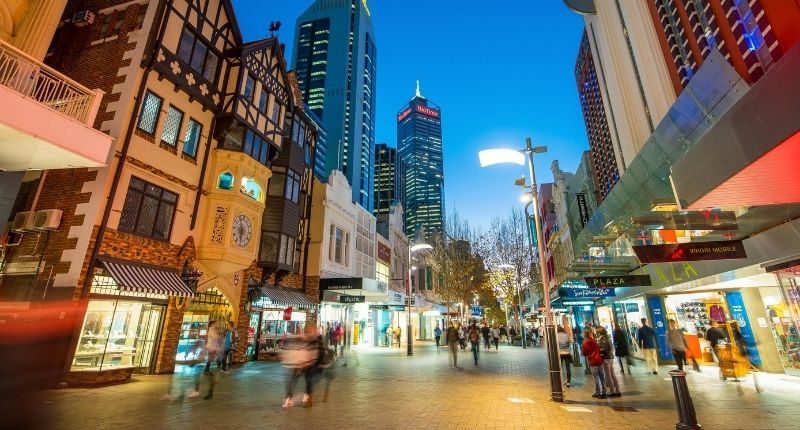- Despite most restrictions easing, foot traffic across the Perth CBD remains significantly lower compared to pre-Covid
- Public transport use in Perth is down by 35.6%
- Only 50% of the daily current CBD workforce is physically back, compared to 2020
As Australia continues to emerge from the pandemic – despite very high daily case numbers nationally – the evidence of behavioural changes continues to grow, as highlighted by analysis from the PAR Group.
Despite the lifting of most major restrictions in WA – generally speaking, masks are only required for close contacts, on public transport and in high-risk settings – significant differences remain in the Perth CBD compared to pre-pandemic times.
Analysis undertaken by Damian Stone of Y Research and Rob Ellis of The Data App has examined changes, such as commuting, closely and their impact on commercial property.
There has been a significant decline in public transport usage for example – Transperth data shows patronage is down 35.6%. In Sydney, where restrictions were in place for longer than Perth, public transport use is down by 14.6%.
Car travel across Perth has risen 1.1% across the major access roads. In Sydney, car commuter traffic is down by almost a fifth (19.6%).
While the office vacancy rate has declined from pre-Covid levels thanks to leasing incentives and stock withdrawals, the drop in daily commuters has resulted in the commercial retail vacancy rate rising by over 30% to 17.8%.
The Property Council also estimated that, compared to 2020, only 50% of the current daily office workforce has physically returned.
The city retail sector has been especially hit hard by this – the lower footfall has been compounded by a 189.8% rise in the share of online spending compared to pre-pandemic levels.
What’s next for Perth?
The implication of these behavioural changes includes commercial property yields on retail assets declining by 68 basis points. Industrial assets, bolstered by e-commerce, have fallen a shade over 200 basis points. Office yields have softened by 101 basis points.
“The long-term impact of COVID 19 not only represents a paradigm shift for commercial property in the city of Perth, but in Australia’s other major cities,” said Mr Stone.
“The way people live, work and shop has changed and it is unlikely the end game has even been reached.”
“The current narrative revolves around getting office workers back to the city. The evidence, so far at least, suggests Perth, like other Australian centres, may also need to consider the scenario of fewer people working in the city than prior to the pandemic.”
Damian Stone, Y Research
Mr Ellis added that previously the city was the ‘destination of default’ for all workers. Now with broader choices, the city and its office towers now need to give workers a reason to be there.
“Retailers equally need to have a compelling offering to entice retail spending,” he said.
“With the possibility business could be less central to the city going forward, the focus could shift to changing the makeup of the city. This could entail fostering more residential and entertainment uses, as well as international visitors (education and tourist).
“The creation of defined precincts, such as education around the new ECU campus, to be developed at Yagan Square, which could be used to attract more people back to the city.”
Rob Ellis, The Data App
Mr Stone added a simple change could be to Perth’s branding. By referring to Perth as a CBD, the image of offices and business district is created, as opposed to one of entertainment, nighlife or culture.
“Calling the city what is, the city, could help to more accurately reflect what it is, or would like it to be,” he said.
“In the short term, it seems the focus needs to be on the role of the office post pandemic, as well as support measures for city retailers.
“If it is a case of encouraging people back to the office, actions to facilitate a return to public transport and incentives to encourage active commuting (walking and cycling) will be required.
“Without some initiatives, the emerging legacy of the Covid-19 pandemic, will be fewer daily workers, with the result higher vacancy rates, particularly for secondary grade office buildings, let alone city retail properties,” he concluded.








